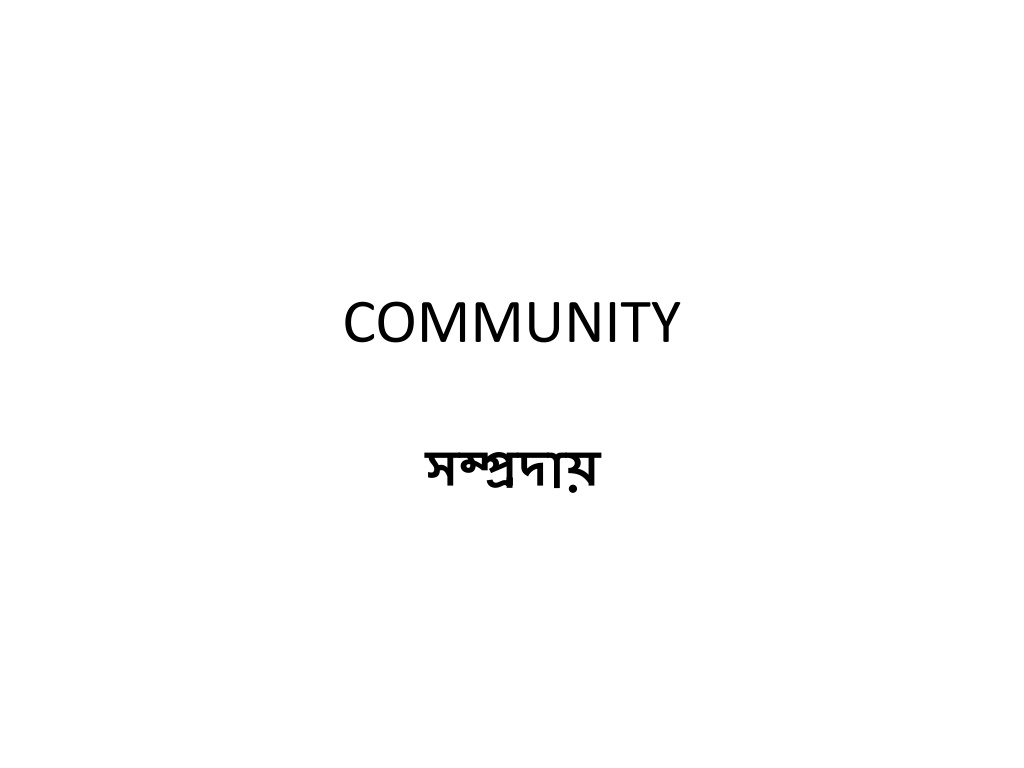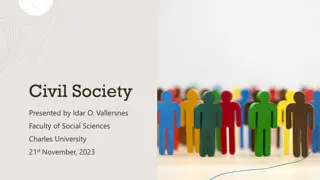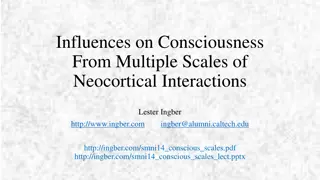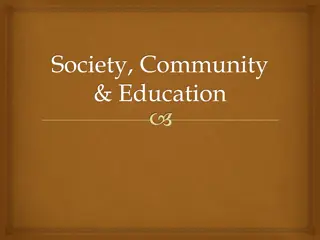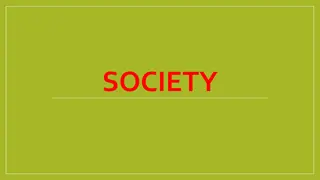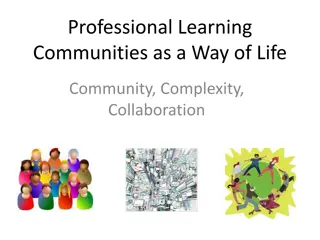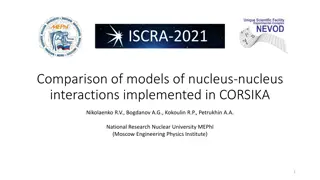Understanding Communities: Characteristics, Interactions, and Differences from Society
Communities are groups of people with shared characteristics and goals, fostering a sense of belonging and mutual support. They thrive on social interactions, diversity, and interdependence. Contrasted with society, where diverse communities coexist, communities have a more concrete existence and localized focus. Explore the essence of community living and its unique dynamics.
Download Presentation

Please find below an Image/Link to download the presentation.
The content on the website is provided AS IS for your information and personal use only. It may not be sold, licensed, or shared on other websites without obtaining consent from the author. Download presentation by click this link. If you encounter any issues during the download, it is possible that the publisher has removed the file from their server.
E N D
Presentation Transcript
INTRODUCTION A community refers to a group of people who share common social, cultural, or economic characteristics, and have a sense of belonging to a particular social group. A community usually has a degree of social integration and can be defined by factors such as geography, ethnicity, religion, or occupation. Example: Punjabis who lives in Punjab. , , , : ,
Characteristics The main characteristics of a community are: A sense of belonging: Members of a community feel that they are a part of something larger than themselves. They have a sense of shared identity, values, and customs that define their group. : - , - Common interests and goals: Members of a community share similar interests, values, and goals, and work towards achieving them collectively. : , - Communication: Communities have systems for communicating with each other, whether it is through social media, meetings, or other forms of interaction. : , , Shared resources: Communities share resources like land, housing, and other infrastructure, and often work together to maintain and manage them. : , , - ,
Continued. Social interactions: Social interactions play a vital role in the development of communities. Members interact with each other, support each other, and collaborate to achieve common goals. - : , , Diversity: Communities can be diverse in terms of religion, ethnicity, language, socio-economic status, and other factors. Diversity can help community members learn from each other and create a strong sense of unity. : , , , - Interdependence: Members of a community depend on each other for support, resources, and mutual assistance. : ,
DIFFERENCE BETWEEN COMMUNITY AND SOCIETY Society is a group of people living in a certain geographic area who interact with each other and share a common culture. On the other hand, the community is a name of a settlement, village, tribe or nation. When persons live together on a particular territory and have feelings of mutuality for each other. Further, they develop various types of relationships among themselves. , , , In a society, the members are diverse as it comprises various communities. Whereas in a community, members share common characteristics, so they are quite similar to each other. , Society is abstract, but the community is concrete. This means the community exists physically. But, society can only be realized. It does not exist in reality but only in people s minds. , ,
CONTINUED In a society, people are aware of their lifestyles or, say, social life and have a common purpose in life. They are also emotionally integrated. Conversely, in a community, people are not aware of their lifestyles and life purposes. They lack cohesiveness and emotional integration. Society is a web of relationships existing among individuals. On the contrary, community implies a group of individuals residing within a certain territory, with some extent of we- feeling. , Society is not confined to any locality or geographical area. But, the community is always concerned with a specific locality. , People belonging to a community have a community sentiment, without which a community does not come into existence. However, society focuses more on the organization. ,
